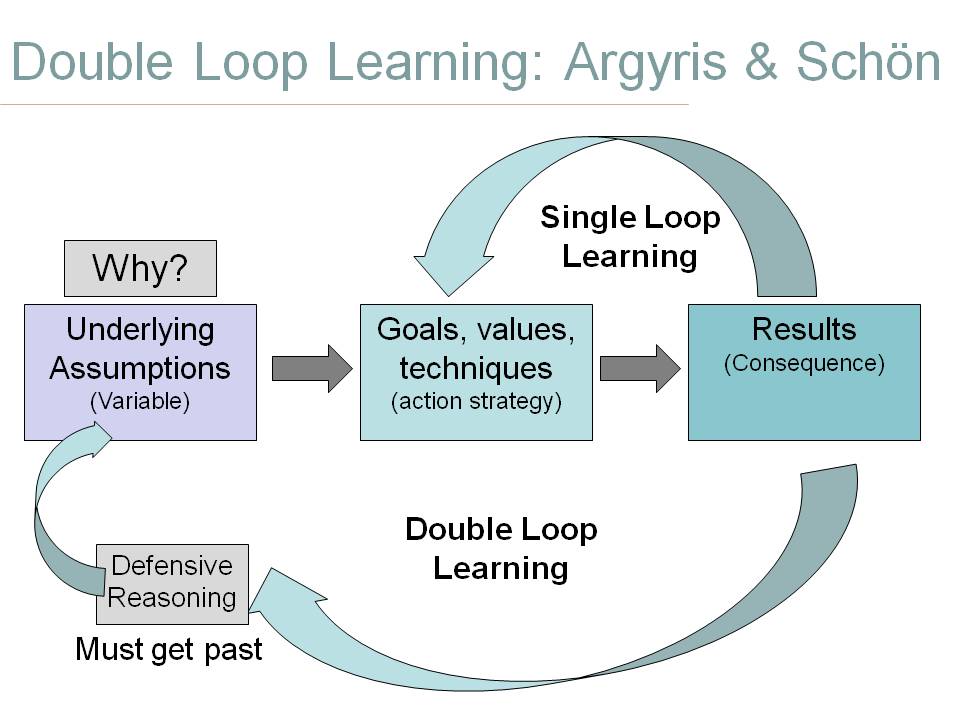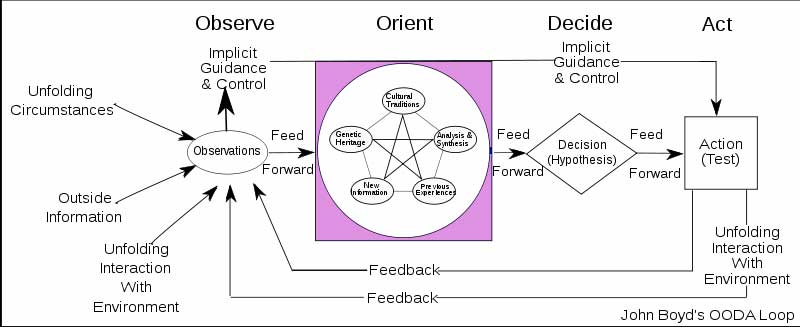Note: This site is moving to KnowledgeJump.com. Please reset your bookmark.
OODA and Double-Loop Learning Activity
This activity provides the learners with an opportunity to reflect and discuss OODA. Have the learners watch the video below. The video is 6:21 minutes long; however, at the 4:30 minute mark, stop the video. Break the learners into small groups of 3 to 4 learners and have them discuss:
- What is the lady doing wrong? (she is stuck in the same loop — even when she moves the creature still taunts her)
- What could/should she do differently?
Instruct them to make notes. Give them about 10 minutes to discuss their answers. When they are finished, bring the small groups back together and have them discuss their answers with each other. When they are finished, play the rest of the video and then have them compare their answers with the video's answer:
Notes to the Instructor
The following information ties in the relationship between Double Loop Learning and OODA. It will assist you in leading the the discussion in this activity.
Chris Argyris coined the term “Double Loop Learning” and “Single Loop Learning.” Single loop learning has often been compared to a thermostat in that it makes a decision to either turn on or off. Double loop learning is like a thermostat that asks “why” — Is this a good time to switch settings? Are there people in here? Are they in bed? Are they dressed for a colder setting? — thus it orientates itself to the present environment in order to make the wisest decision.

A person who is double loop learning is basically orientating herself to all possible solutions within her environment by asking a series of “whys” that is similar to Sakichi Toyoda's method who used a technique called the Five Whys — when confronted with a problem you ask “why” five times. By the time the fifth why is answered, you should be at the root cause of the problem.
Double Loop Learning is closely related to Orientation in the OODA loop as Jon Boyd noted that this part of the loop was perhaps the one action that most decision makers failed at — they got stuck in single-loop learning, thus failed to properly orientate themselves to the situation or environment. This is why he emphasized the Orientation in his chart:

Next Steps
Read the chapter on OODA
Return to the Leadership Training and Development Outline
